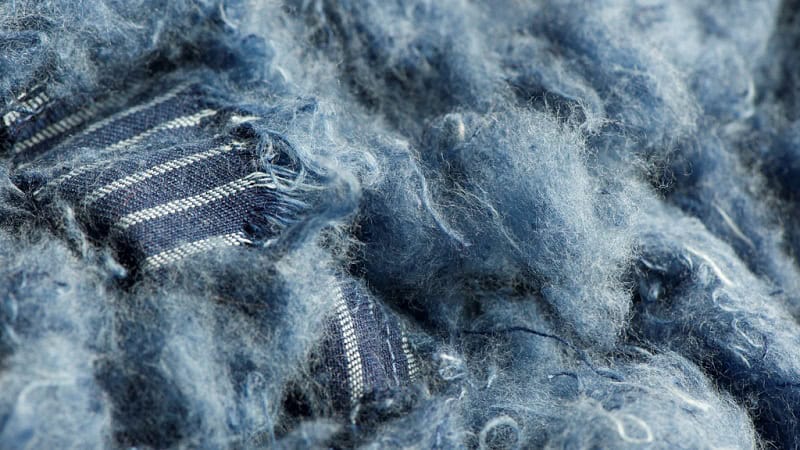What is the difference between open-loop and closed-loop recycling?
Discover what is ‘recycling’ and the difference between open-loop and closed-loop.
In the pursuit of sustainability, the fashion industry is turning more and more towards recycling, in order to reduce waste and promote circularity. But what is ‘Recycling’? what is the difference between open-loop and closed-loop recycling?
In simple terms, recycling is the process of transforming waste into reusable material. This step is taken when a product is no longer usable, cannot be refurbished or remanufactured, or isn’t suitable for those processes. Recycling ensures that the materials of the product are kept in use, preventing them from becoming waste. While the embedded value of a product—the time and energy spent making it—is lost in recycling, the value of the materials themselves is preserved.
In a nutshell, recycling is the last resort, and the circular economy goes right back to the beginning to prevent waste and pollution from being created in the first place. In the face of our current environmental challenges, recycling won’t be enough to overcome the sheer amount of waste we produce.

Recycling in fashion can be categorized into two main types: open-loop and closed-loop. Each system has distinct characteristics and implications for how textiles and materials are reused.

Open-Loop Recycling in Fashion
Open-loop recycling, also called ‘down-cycling’, in fashion refers to the process where textiles and clothing are recycled into new products that are different from their original form. This often involves converting used fabrics into materials for other industries or lower-grade products within the fashion industry itself. For example, recycling old clothes into industrial rags or insulation materials; or converting used textiles into stuffing for furniture or automotive interiors.
Although it is admirable on face value that a lot of clothing brands are using recycled plastic in their designs, making clothes out of plastic is another example of down-cycling. By filling our clothes with plastic we’re just creating a new kind of waste. One that is potentially harder to deal with (Read more on Is Recycled Polyester a Sustainable Choice?)
Closed-Loop Recycling in Fashion
Closed-loop recycling in fashion involves recycling textiles and clothing into new products of the same type and quality as the original. This system aims to create a continuous cycle of reuse, maintaining the integrity and properties of the materials. For example, recycling polyester garments into new polyester fibers that are used to create new clothing; or turning used cotton fabrics back into cotton fibers for producing new garments.
What are the challenges of closed-loop recycling in fashion?
Nr. 1
Material Complexity
Many garments are made from blended fabrics (e.g., cotton-polyester blends), making it difficult to separate and recycle the different fibers effectively.
Nr. 2
Quality Retention
Repeated recycling can degrade fiber quality, making it challenging to maintain the original properties and performance of the materials.
Nr. 3
Technological Limitations
High-quality closed-loop recycling often requires sophisticated and expensive technology to efficiently separate, clean, and process textiles. Current recycling technologies may not be advanced enough to handle all types of textiles effectively, limiting the scope of closed-loop recycling.
Nr. 4
Economic Factors
The process of closed-loop recycling can be more expensive due to the need for advanced technology and specialized processes. Moreover, the market for recycled textiles can be volatile, with fluctuations in demand and price affecting the economic viability of recycling initiatives.
Nr. 5
Logistical Challenges
Efficiently collecting and sorting used textiles is logistically challenging and resource-intensive. A robust infrastructure is required to support the collection, transportation, and processing of textiles for closed-loop recycling, which may not be well-developed in all regions.
Nr. 6
Environmental Impact
While closed-loop recycling aims to reduce waste, the processes involved can still be energy-intensive and resource-demanding, potentially offsetting some environmental benefits.
Nr. 7
Consumer Behavior
Last but not the least, consumer awareness and willingness to participate in recycling programs are crucial.

In the fashion industry, both open-loop and closed-loop recycling offer valuable pathways for sustainability
In the fashion industry, both open-loop and closed-loop recycling offer valuable pathways for sustainability, and both have their place. Open-loop recycling allows for the broad repurposing of textiles into various products, though often with some loss in material quality. Closed-loop recycling, on the other hand, strives to maintain the integrity of materials, supporting a sustainable circular economy where textiles are continuously reused in their original form. However not all recycling processes are able to do this, and open loop recycling is the next best thing.
Despite the challenges of closed-loop recycling, it remains a crucial goal for achieving sustainability in the fashion industry. Addressing these obstacles requires coordinated efforts from stakeholders across the fashion value chain, including manufacturers, consumers, policymakers, and recyclers. Investments in technology, infrastructure, and education are essential to overcoming these challenges and realizing the full potential of closed-loop recycling in fashion.
However, understanding and leveraging both recycling systems, the fashion industry can significantly reduce waste and promote more sustainable practices. And remember, just because it didn’t get recycled into its original product, it doesn’t mean it can’t have a long useful life!
Since 1943, Manteco® has always turned both virgin and recycled wool fibers into premium quality textiles
After decades in the fashion world, in 2018, we have created the Manteco Academy project, through which we give webinars, in-person lessons and workshops on eco-design, circular economy and sustainability to numerous fashion schools, technical universities and brands worldwide. Thanks to this educative commitment and our heritage, we are often invited as guest speaker at events, panels, podcasts and conferences about sustainable fashion and circular economy.

